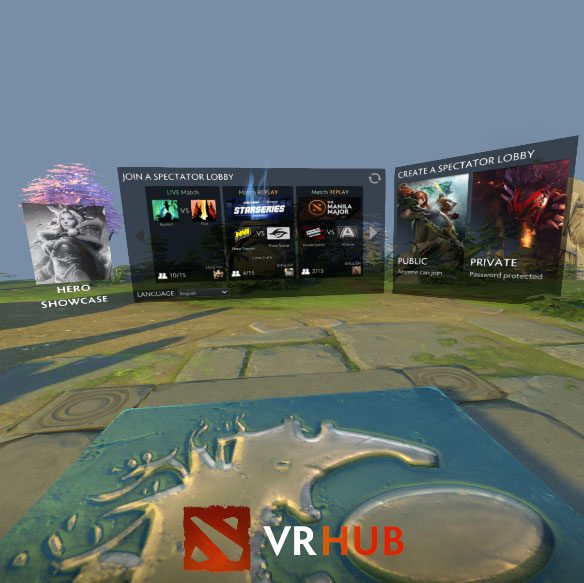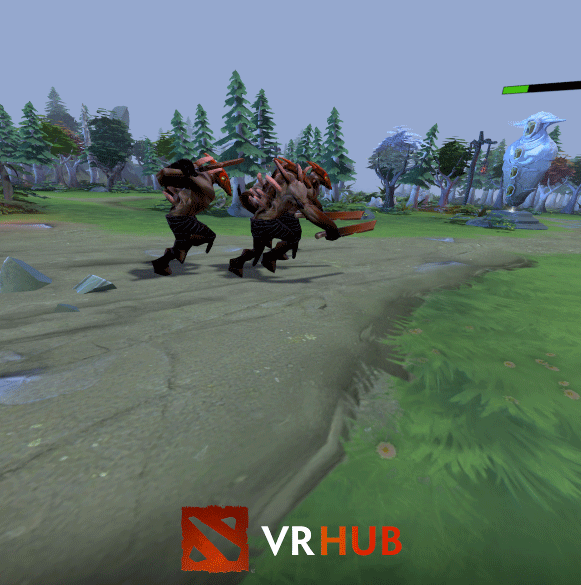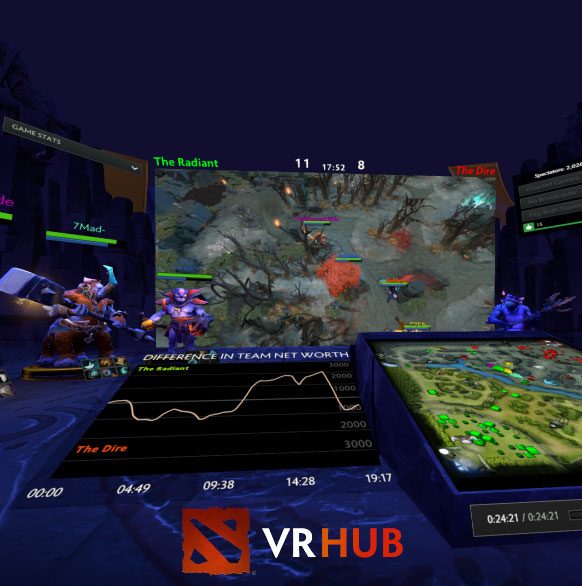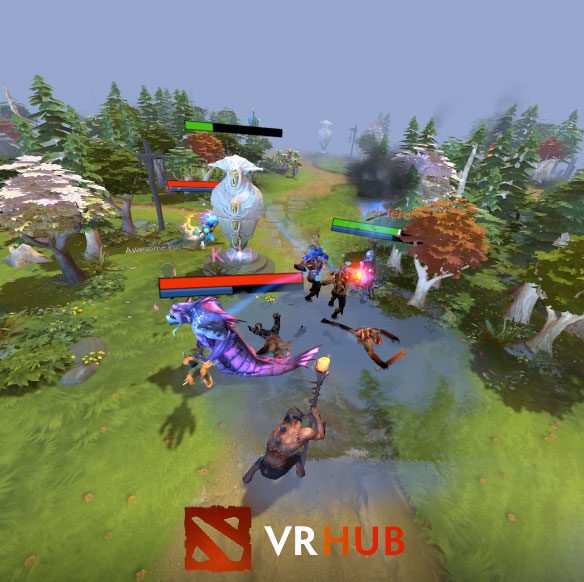Dota 2 released free DLC yesterday that lets you join a sort of multi-user VR spectator lounge where you can watch live and recorded matches from a movie theater-sized screen, or get down on the ground right in the midst of the action. Here we take a quick look to see Valve’s first public iteration of the Dota VR Hub.
Strapping into my HTC Vive (currently the only headset with the requisite motion controllers), the first thing I noticed was the sheer scale of everything. Things were enormous.
Going to the hero selector, you get a chance to come face-to-face (more like face-to-chest) with the heroes of Dota 2, the largest of which seemed nearly 3 meters tall. Up until that point, I never realized how detailed the little Heroes actually were on my monitor, but once you get up close in VR, you really do get the full effect.
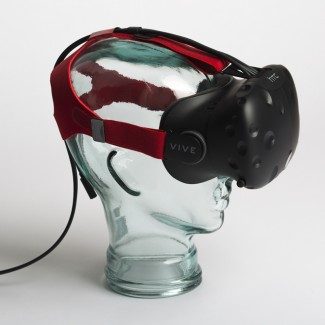
And then there were the matches, which presented a various selection of both recorded and live matches to choose from. For the purposes of the video, I hosted a private lobby and was automatically given a PIN that I could give out to up to 14 other people.
After a lengthy loading time (edited out of the video) I was in the cinema with my match ready to go.
Clicking on the mini-map in the cinema lets you zoom down to the battlefield, which is instantaneous. There you have three scalable view points to choose from ranging from 1:1 to Godzilla. Even when you scale up that large though, the battlefield is a pretty big expanse to cover. Thankfully you can teleport around, or simply instantly return to cinema to pick another vantage point from the mini-map.
While the Dota VR Hub looks impressive, and shows the same basic polish and ease-of-use as Valve’s other VR experience, The Lab, it doesn’t go without a few unfortunate hitches.

Watching matches in a multi-user lounge with commentary just isn’t fun. It’s difficult to chat with anyone else because the relative volume of the commentators, who sound like they’re in the room with you, and quickly devolved into meaningless shouting from everyone. It’s doubly worse because Valve haven’t seemed to gotten positional audio right, as you can hear every player in the room, even those clear across the map. Knowing who is talking is fundamental to social spaces in VR.
I can however see myself watching with a few close friends and making our own commentary though. A global rewind, pause, and fast-forward would also be nice, which would leave more natural room for chatting—although Valve has said they’ll be improving the platform before the International begins in early August.

